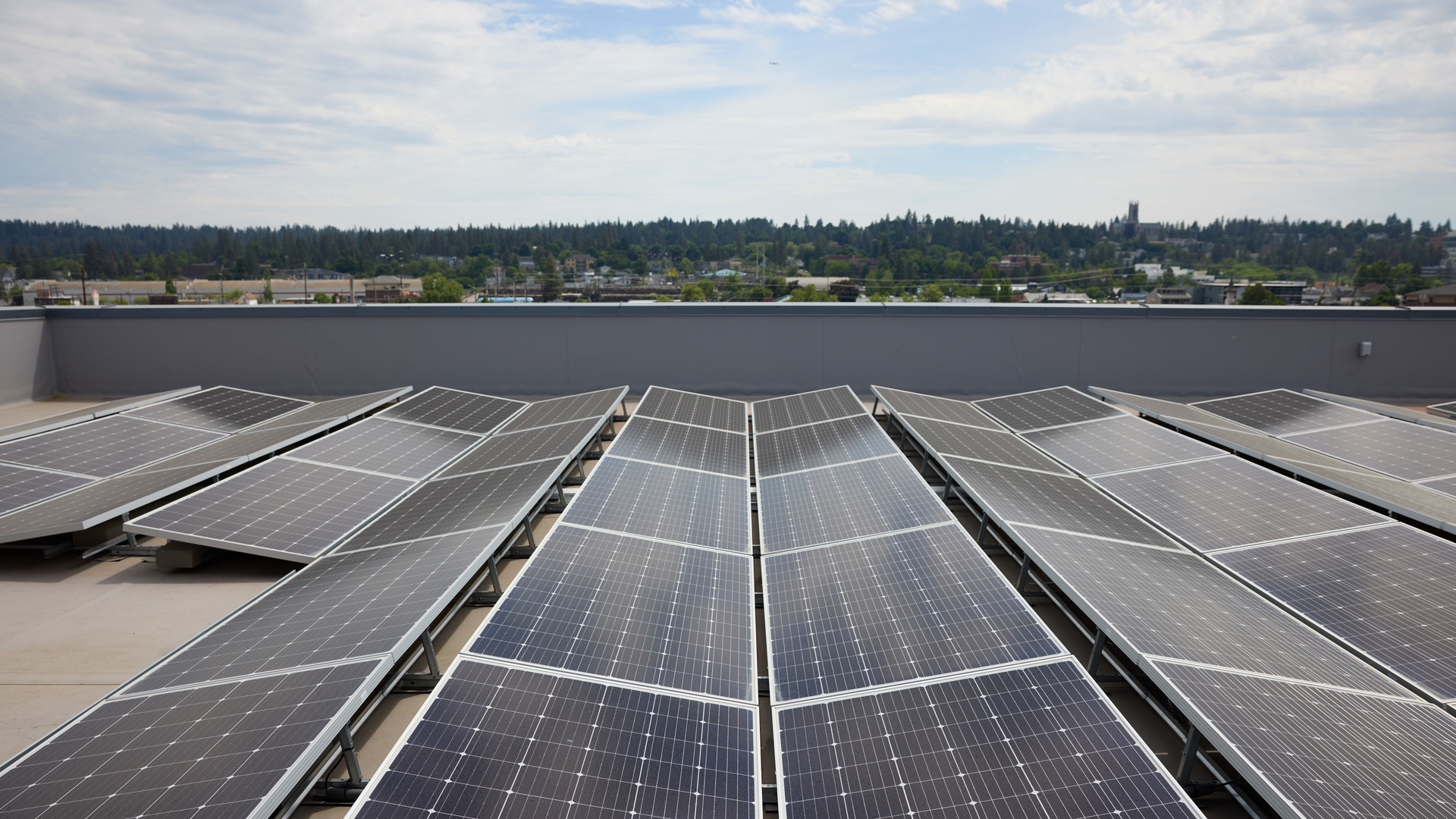- All Posts
- Earth Day: Collective Progress Through Common Ground
Earth Day: Collective Progress Through Common Ground
By Ash Awad, President and Chief Market Officer
Each year, the lead up to Earth Day on April 22 provides an ideal opportunity to reflect on the common ground that unites us in action for impact. Earth Day was created in 1970 to rally awareness for rising air and water pollution. Much like today, the country faced a political divide stirred by the Vietnam War and pending oil crisis.
Fifty-five years later, the opportunity for common ground once again presents itself. Together, we can forge a future that honors our shared responsibility to the planet, local communities and each other.
The Energy Transformation is Already Underway
Modernizing our energy infrastructure is a shared challenge that impacts everyone, everywhere. The need is not limited to sustainability and climate. We need a modern energy landscape that delivers certainty, resiliency and affordability.
Several critical issues are driving our energy transition. Three stand out in their opportunity to drive common ground – the resilience required to withstand extreme weather, power availability and capacity, and managing old and failing systems across our communities – particularly in our schools.
Increasing our Resiliency
Extreme weather events are increasing and becoming much more consequential. Last year, 27 different weather events caused at least $1 billion in damage each. The collective toll reached $182.7 billion with the loss of 586 lives.
Our built environment is not designed or constructed for this level of extreme weather. How we design, build and operate facilities must adapt. Local communities must be able to depend on their buildings and energy infrastructure for shelter and safety, no matter the weather.
Progress is evident as communities are becoming more resilient through proactive planning, strengthened social connections and addressing vulnerability through capacity building. These efforts are focused on investing in climate-resilient energy infrastructure while retrofitting and adapting buildings to withstand extreme weather and serve as emergency shelters.
Power Availability & Capacity
How we generate, distribute and consume energy is changing – driven by climate risks and technology advancements. We need to dramatically increase our power capacity to keep pace with our evolving thirst for energy on a national level. The electrification of everything is a positive step forward, yet electric vehicle infrastructure, removing fossil fuels from our utility grid, and hyper-scale AI data centers are creating an unprecedented call for more power.
The data center development race is intensifying. To keep pace with AI advancements, the U.S. needs to add 55 GW of data center capacity by 2030. Currently, only 20 GW is planned, leaving a 35 GW gap that could impact U.S. technology advancement, economic competitiveness, and national security. Data centers are investing in liquid cooling technologies to boost capacity, making existing and new data centers more efficient to address the 35 GW capacity gap. The result squeezes every ounce of computing power out of existing and new data centers, making it easier to move faster in support of AI within the U.S.
The U.S. must address capacity development on a generational scale – thinking beyond a project-to-project basis. Our built environment and energy infrastructure are aging and require renewal for increased resiliency and flexibility. The answer lies in creating distributed energy resources closer to the point of consumption. That means doubling down on solar, wind, storage and other renewables, as well as innovating new energy generation strategies.
Managing Old and Failing Systems
Deferred maintenance has devastated our publicly funded facilities. Every $1 of maintenance deferred today turns into $4 of issues the following year. The result is a trillion-dollar deferred maintenance deficit within publicly funded buildings.
Our K-12 schools face the brunt of the challenge. Most facilities were built in the early ‘70s, leading to increased maintenance needs and potential safety hazards. Extreme weather, including rising temperatures, is creating challenging environments for schools across the country. It’s estimated that roughly 36,000 public school buildings here – or about half of all schools – lack AC or require a complete HVAC replacement to ensure healthy, safe and effective learning environments.
Hot classrooms make it incredibly difficult for students to absorb and retain information. Heat exposure hinders cognitive skill development. Each 1°F increase in temperature reduces the amount learned that year by 1%. Air conditioning is crucial for effective learning during heat waves.
Schools are working hard to update HVAC equipment and strategies to battle extreme heat, increased wildfire smoke and airborne illnesses. McKinstry recently assembled a panel of K-12 indoor environmental experts to explore the classroom of the future. The discussion introduced myriad considerations and solutions for school improvements.
Progress through Common Ground
These issues influencing our collective future are not abstract ideas. Each is a very real, pressing challenge that will shape the future of our society. There are multiple paths to achieve success, each requiring collaboration across all stakeholders to deliver progress. That progress, however, must be balanced with pragmatism, ensuring we deliver solutions that work today while building the foundation for a more sustainable, adaptable and regenerative tomorrow.
Failing to move forward together is not an option. We must rally to modernize our energy infrastructure, lower energy costs and reduce emissions, all while delivering economic benefits at the local, state and national levels. This is a rare opportunity for a win-win-win — but only if we embrace the challenge together with urgency and focus. Making progress through common ground is what Earth Day is all about.
Explore Other Insights

Delivering 100+ Energy Audits Across Washington
When Washington State introduced its Clean Building Performance Standards, public-sector building owners faced a sign…

Constant Curiosity and Connection: Cass Young’s Journey a…
From supply chain to project engineering, Cass Young has built her career at McKinstry by staying curious, embracing …

AI’s Shadow Footprint: What Smart Infrastructure Needs to…
Every advancement in artificial intelligence carries a physical consequence: more computation, more heat and more pow…